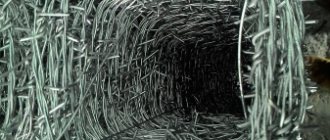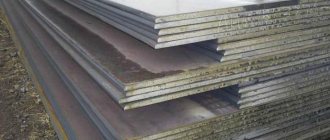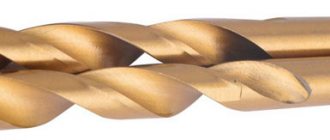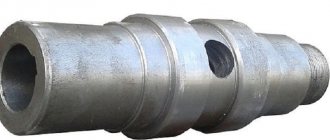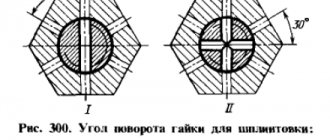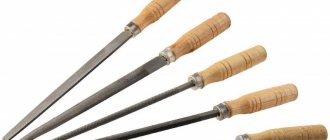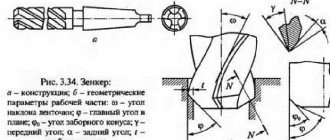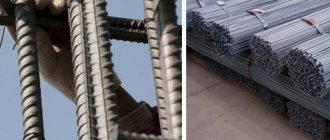Aluminum wire
Aluminum wire is one of the most popular types of aluminum products. It is used very widely: for the production of cables, wires, electric drive networks, used in the food industry, automotive industry, construction, and also as a raw material for the manufacture of various parts, meshes, etc. One of the most important areas of application is welding. When welding, this material is used as a melting electrode. Welding with aluminum wire can provide joints with a number of important qualities: strength, durability, ductility, protection from hot cracks and resistance to corrosive destruction. Aluminum welding wire is an indispensable material in many industries.
In the production of this material, both aluminum and its alloys are used. Requirements for aluminum wire are described in GOST 14838-78. Among the advantages of the material are high strength with minimal weight, relatively low price, high resistance to corrosion, ease of processing and ductility. It is also worth noting that the production of aluminum wire is improving every year, and new alloys are appearing.
You can order aluminum wire by calling +7(495)215-50-72
THE FINAL PRICE FOR ALUMINUM WIRE DEPENDS ON THE TERMS OF DELIVERY (QUANTITY, TERMS OF PAYMENT, DELIVERY), THIS PRICE LIST IS FOR INFORMATIONAL NATURE ONLY!
Aluminum wire is one of the popular categories of long semi-finished products made of aluminum and alloys based on it, which is characterized by a small ratio of cross-section (round, square, hexagonal) and length. The quality of such products is determined taking into account the chemical composition, technical condition and method of its production.
Additional tips regarding AP welding
Aluminum wire should only be used for welding products made of aluminum; it is not recommended to use AM for welding products made of other metals. The optimal welding method is to use semi-automatic or electric arc technology. Argon should be used as a shielding gas - this substance provides almost 100% protection for aluminum, and such gas is quite cheap. It is not recommended to use a long, wide AP for welding.
Aluminum has a high coefficient of linear expansion when heated. Therefore, if a long wire is used after cooling, there is a high risk of cracks forming in the seam. Although if you use a short cord, the risk of cracking is minimal.
A few more tips:
- There is a thin oxide film on the surface of any metal object. In the case of iron, cast iron, steel or copper, the film breaks down on its own during welding (with the exception of sensitive alloys). Therefore, such a film is usually not removed before welding. In the case of aluminum, the film functions differently - during welding heating, the film is not destroyed, but partially melts and becomes part of the base material. After cooling, it hardens and crystallizes. This leads to a significant increase in the fragility of the alloy + the quality of the weld deteriorates. Therefore, before welding, the oxide film should be removed by any convenient method - mechanical processing, heating, alkaline baths.
- During semi-automatic welding using AP, there is a risk of wire sticking to the metal outside the active zone. However, there is one trick - four-roll welding installations improve the stability of the wire feed into the core, so when such devices are used, the risk of sticking is minimal.
- Another problem with aluminum welding is the formation of craters and cracks in the weld area after cooling. Technical tricks will not help here, since craters are formed during the cooling stage of the material. However, there is one physical trick - during welding, give the seam a convex shape. In this case, the excess pressure, which leads to the formation of craters, will be evenly distributed over the entire surface of the seam, so the risk of cracking will be minimal.
Varieties and specifics
Aluminum wire has significant advantages that distinguish it from other materials:
- good strength;
- pliability;
- light weight;
- high level of electrical and thermal conductivity;
- resistance to moisture, long service life;
- good wear resistance.
Compared to wire made of silver, copper or gold, this material has a lower thermal conductivity index, but is much cheaper in cost.
The product is highly resistant to various types of corrosion, including when used in rooms with high humidity levels. It is thanks to these qualities that it is used in the construction of objects that involve contact with a humid environment.
The main positive qualities of the material are recognized as: ease of processing and pliability, electrical and thermal conductivity, and insignificant magnetic properties.
Aluminum wire is produced in accordance with sanitary standards, so the material is recognized as safe in contact with food. Thanks to these qualities, it is possible to use the products even in industries such as the food industry.
One of the main advantages of aluminum wire is its cost. It is accessible to both businesses and individuals.
The material is a popular item for non-ferrous metal products. The main areas of its use include: welding work; industrial production of cable products; organization of production of air and sea liners; production of electrical conductor products; application in industrial production in the automotive and engineering industries; when performing construction and installation work, etc.
There are such types of aluminum wire as welding and rivet. To perform welding, high-quality material is used, the characteristics of which determine the reliability and long service life of the connection, the durability of the seam and the level of its protection from the negative influence of the environment.
The wire is used based on the quality characteristics of the material used for its production, the type and dimensional parameters. On the company's website you can get acquainted with products made from aluminum and its alloys, presented in diameters from 1.5 to 7 mm.
Aluminum wire, according to current GOST, can be drawn or pressed.
Considering the areas of use of rolled products, they can be classified into the following groups:
for cold landing operations; for arrangement of power lines; for the electrical industry; for welding.
Considering the method of heat treatment of the material, aluminum wire is divided according to the following characteristics:
obtained by the hot-pressed method (without heat treatment); using annealing (soft); obtained by cold hardening (H); with hardening (aged naturally (T) or artificially (T1).
The material for the manufacture of which thermally non-hardening alloys (AMg5, AD1, AMg3) are used is subject to hardening using the cold-hardening method. The property of plasticity in this category is formed as a result of annealing.
Among the extensive range of semi-finished products there is aluminum wire with heat-strengthening properties (D16P, D1P, D18), the strength level of which increases through aging, as well as during hardening. For these semi-finished products, processing conditions are applied at +40°C; for B65, aging is carried out in the temperature range +75°C… +90°C.
Guided by the requirements of regulatory documentation, rolled metal is supplied on coils, in coils or sections (bundles).
Basic properties
Aluminum wire is an elongated solid type profile, which is characterized by a small ratio of length to cross-sectional area. This metal product has the following characteristics:
- light weight;
- flexibility;
- strength;
- resistance to moisture;
- wear resistance;
- durability;
- weakness of magnetic properties;
- biological inertia;
- melting point 660 degrees Celsius.
Aluminum wire, which is made in accordance with GOST, has many advantages when compared with other similar products. The material is versatile and resistant to corrosion, so it is often used in cases where contact with water is inevitable. Aluminum is easy to process and is completely safe for human health. The wire usually meets the requirements of the sanitary and epidemiological service.
Melting of this rolled metal occurs without any difficulties. When exposed to air, an oxide film appears on the wire, thanks to which the product does not rust or deteriorate over the years. The properties of aluminum wire are directly influenced by the condition of the metal, as well as the production method.
Aluminum wire rod, which has a diameter of 9 to 14 millimeters, is characterized by increased strength and resistance to mechanical damage.
Receipt can occur in three ways.
- Rolling is based on working with aluminum ingots. The manufacturing procedure is carried out on a wire rolling mill, which has the form of special automated mechanisms and is equipped with heating stoves.
- Continuous casting is considered relevant if the raw material is presented in the form of molten metal. This work involves loading liquid masses into the crystallizer. There is a cutout in the specially rotating wheel; it is cooled by water masses. During movement, crystallization of the metal occurs, which is transferred to the rolling shaft. The finished products are rolled into coils and packed in polyethylene bags.
- Pressing. This manufacturing method is considered relevant in those enterprises that have hydraulic presses. In this case, the heated ingots are sent to matrix containers. The material is processed using the pressure of a punch, which is equipped with a press washer.
In order for aluminum wire to have high quality and performance characteristics, manufacturers perform pre-treatment:
- deformed by cold - this is how brands AD 1, AMg3, AMg5 are made;
- hardened and aged by cold - D1P, D16P, D18;
- fired, which adds plasticity to the wire;
- They do abrasive processing, which helps remove burrs and round the metal ribs.
Aluminum wire is made from wire rod by drawing. To do this, they take a workpiece that has a diameter of 7 to 20 millimeters and pull it through a die that has several holes.
Aluminum wire diameter
As initial data when determining a parameter, the main factor is the grade of aluminum or alloy. GOST 14838-78 regulates the diameters of wire of the following grades: D1P - from 1.4 to 12 mm, D16P - 1.5...7.8 mm, for others - 1.4...10 mm. Wire in accordance with GOST 7871-75 is manufactured with diameters from 0.8 to 12.5 mm.
The weight of the product is determined taking into account its type and size.
Aluminum wire production
The production of aluminum wire is carried out on drawing mills by drawing the workpiece. To obtain blanks, it is envisaged to use pressing, continuous casting, hot rolling or rotary forging.
Drawing is recognized as one of the most common methods for calibrating profiles to achieve the required effect and characteristics. Thanks to this technology, the required wire strength, high-quality surface condition are ensured, and the accuracy of dimensional values is increased.
The pressing technology involves the use of matrices with sections whose parameters correspond to the dimensions of the required profile. Processing of the workpiece using a matrix is carried out by presses.
Aluminum wire grades
When producing aluminum wire, aluminum and its alloys are used in accordance with GOST 14838-78, the chemical composition of which corresponds to GOST 4784-97.
The production of welding wire is carried out in accordance with the requirements of GOST 7871-75. In accordance with GOST 14838-78, AD1 or B65 wire is produced for cold heading or stamping operations. Procedures for preparing samples to determine the composition of the material are carried out in accordance with GOST 24231-80.
AK5 is a wire made of cast aluminum, which is characterized by the ability to manufacture products with small diameters. Copper and silicon in the composition give hardness to the metal. AMts, AMG5, AMG3, AMG6 are characterized by anti-corrosion resistance properties, they are amenable to welding and various processing methods. Duralumin alloy B65 has increased strength.
Welding technique
When welding aluminum and its alloys, clean and dry gloves made of split leather or similar material must be used.
Mechanized welding of butt joints without cutting edges in the lower and vertical positions is usually performed without transverse vibrations of the electrode
If there is a cutting of edges, the first seam is also performed without transverse vibrations, and subsequent ones - with small (up to 5 mm) movements of the electrode
When welding fillet welds in the lower position, the angle of inclination of the torch relative to the vertical wall is 30-45°. A fillet weld on a vertical plane is made from bottom to top, “angle forward.” Single-pass welding is performed with movements of the end of the electrode. Fillet welds of large sections on a vertical plane are made multi-pass by making narrow seams. Horizontal butt seams are also welded.
On the inside, the seam is protected with remaining or removable pads or with protective gas supplied by one of the following methods:
1- shielding gas; 2- parts to be welded; 3- plugs; 4 — connecting cables
Aluminum welding wire
Aluminum wire is a popular material for welding in construction, engineering and other areas of industrial production. Thanks to the use of welding, it becomes possible to create technologically advanced structures and structures made of aluminum. In this case, one of the main advantages of rolled aluminum is taken into account - high strength indicators combined with low weight.
The use of good quality wire allows you to obtain excellent technological characteristics of the connections.
In some cases, welding wire is used for welding, the chemical composition corresponding to the part being welded. The presence of alloying elements in the wire makes it possible to adjust the composition of the seam, ensuring quality characteristics.
Aluminum wire can be used to produce electrodes for manual welding, used for work with simple structures.
Achieving the required parameters of joint strength is achieved by welding in inert gas using non-consumable electrodes, using aluminum wire as an additive. Such welding can be carried out automatically or manually. Argon is used as an inert gas. It turns on a few seconds before the arc is ignited and turns off just as quickly after the arc breaks.
In addition to manual welding, the material is used for semi-automatic welding. Welding on such equipment provides versatility, strength, safe use, maneuverability, and ease of operation.
Wire AD1
To produce aluminum wire AD1, aluminum is used, which has the following qualities: electrical conductivity, corrosion resistance, pliability, and weldability. AD1 wire includes silicon, zinc, iron and other elements as alloying components.
The use of AD1 aluminum wire is effective. In the production of parts, cold heading and volumetric cold stamping are used. The material is used in the production of various hardware (screws, bolts, rivets, etc.) that do not experience heavy loads.
Aluminum wire AK5N
Aluminum wire AK5N is a solid drawn profile, the production of which is regulated by GOST 7871-75. Long products are recognized as a popular material and are in demand. To obtain it, a cast aluminum alloy is used. The letter “N” indicated in the marking indicates that the metal belongs to the cold-worked group. The chemical composition of AK5N contains large quantities of copper and silicon, which gives increased hardness to the product.
Aluminum wire AK5N is used for welding as a consumable electrode. The material has such important quality indicators: strength, pliability, corrosion resistance. The scope of use of drawn profiles is not limited to welding work. Aluminum wire is used in the manufacture of fittings, cables, fasteners and many other metal products.
Overview of species
During the production of aluminum wire, manufacturers strictly comply with GOST requirements. Depending on the functional characteristics, this long product can be presented in different types. It is sold in coils or coils, the weight depends on the length and diameter of the wire.
| Nominal diameter, mm | Weight 1000 meters, kg |
| 1 | 6,1654 |
| 2 | 24,662 |
| 3 | 55,488 |
| 4 | 98,646 |
| 5 | 154,13 |
| 6 | 221,95 |
| 7 | 302,1 |
Depending on the condition of the material, the wire can be:
- hot pressed, without heat treatment;
- annealed, soft;
- hardened;
- hardened naturally or aged artificially.
By chemical composition
Depending on the content of chemical components, aluminum wire is divided into the following types:
- low-carbon (carbon mass is no more than 0.25 percent);
- alloyed;
- highly alloyed;
- based on household alloy.
According to sectional shape
According to the cross-sectional shape, aluminum wire can be:
- round, oval, square, rectangular;
- trapezoidal, multifaceted, segmental, wedge-shaped;
- Zeta-shaped, x-shaped;
- with periodic, shaped, special profile.
By surface type
The following types of aluminum wire can be found on the materials market:
- polished;
- polished;
- etched;
- with metal and non-metallic coating;
- light and black.
Aluminum welding wire is used during welding in construction and mechanical engineering. Thanks to the use of this product, a high level of design manufacturability is observed. A product with the AD1 brand is characterized by good electrical conductivity, corrosion resistance and ductility. It contains alloying additives such as silicon, iron and zinc.
Welding wire AMg5N
AMg5N welding wire is a type of rolled aluminum, representing a long drawn profile. The production process for obtaining the semi-finished product is described by GOST 7871-75. The alloy contains impurities of silicon, zinc, iron and copper, as well as manganese, which acts as an alloying additive. The material is cold-worked, as indicated by the presence of the letter “H” in the marking.
AMg5N wire has flexibility and high strength, is resistant to various types of corrosion, weak magnetism, and high thermal and electrical conductivity. The use of aluminum wire for welding as a consumable electrode makes it possible to obtain a reliable and hermetic welding seam. The material is also widely used in other industries: food, automotive, construction industries.
Characteristics
Distinctive characteristics are high thermal and electrical conductivity. These properties impose certain requirements on the choice of welding modes. In some cases, to perform a high-quality welded joint, preheating of the workpieces is recommended.
The linear expansion coefficient, which has a significant value, creates conditions for increased deformation and leads to warping of the joined workpieces.
A large value of the shrinkage coefficient causes significant internal stresses during cooling . This leads to the appearance of cracks.
Elisental Aluminum wire MIG 4043 (AlSi5), 1.6mm, 7kg. Photo Welding Technologies
The chemical composition of the wire should be close to the material being welded. For example, when welding aluminum-magnesium alloys, the magnesium content in the wire should be slightly higher than in the base material. When performing welding operations, magnesium tends to decrease in quantity.
The mechanical characteristics of the wire (tensile strength, relative elongation, etc.) must correspond to the base material.
Reference. Characteristics and other relevant information about other types of wire: copper, copper-plated, polished, titanium, stainless, steel, powder, alloyed - will be of interest to craftsmen.
Aluminum wire B65
Aluminum wire B65 is made from duralumin alloy and has higher strength characteristics. The chemical composition according to GOST contains zinc, titanium, copper, manganese, magnesium, silicon and iron, with a total content of no more than 7%. The material is widely used in construction, food industry, automotive industry and energy.
The undoubted advantages of B65 aluminum wire include:
high mechanical strength characteristics; resistance to chemical corrosion; the possibility of using any mechanical treatment; indicators of good ductility and toughness.
